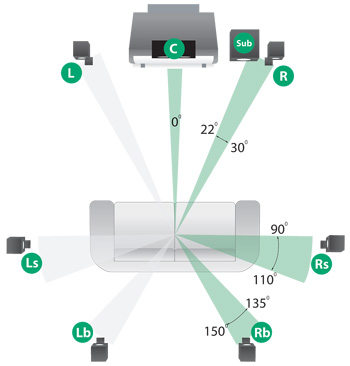Q. I keep seeing criticisms on audio forums of the new DVD-Audio and SACD high-resolution audio formats that suggest that "they have no bass management or delay." I know what bass management is, but why is "delay" important for DVD-Audio or SACD surround music systems? What is DVD audio delay? M.B.
A. One of the most acute abilities of human hearing is our knack for instantly sensing the direction and intensity of specific sounds. If we lacked this ability, there wouldn't be much fun in stereo or home theater multi-channel surround sound, and more important, this directional hearing ability plays a huge role in self-preservation.
Our precise stereophonic hearing acuity results from near-instantaneous calculations performed by our brain when it measures the difference in timing of sounds that reach one ear and the length of time it takes the same sound to round our head and reach the other ear. Called "inter-aural time differences" (IAT), these immediately tell us which direction a sound comes from. Inter-aural amplitude (loudness) differences combine with the timing differences to give us our finely-tuned multi-directional hearing ability.
If you think for a minute about virtually any installation of main front speakers and side- or rear-located surround speakers, you'll realize that in most rooms, the surround or rear speakers are often closer to the listening area than the front speakers.
By our laws of directional hearing (sound travels about 1 foot per millisecond), it's apparent that any sounds coming from loudspeakers close to the listener will be perceived before the sound from speakers farther away--the main speakers at the front.
If a surround sound setup is to perform convincingly, the sounds emanating from the side or rear speakers must be delayed by 10, 15 or 20 milliseconds or more, so they arrive after the sound from the main speakers reaches our ears, otherwise your brain will tell you that the sounds are coming first from the surrounds and then from the main speakers and the whole illusion will collapse. (In mixing Dolby Digital 5.1 movie soundtracks, there are times when the director intentionally wants you to hear the sound from, say, the right rear speakers first, as in a plane or spaceship that is to fly diagonally over the room and appear on-screen as it passes above us and moves on.)
The intrinsic flaw native to both DVD-Audio and SACD formats when they were first introduced was that there was no requirement for implementing delay of the rear channel sounds. Consequently, during demos, I found that if my seat was even slightly closer to a left or right rear speaker than the front speakers, that's where I heard all the sound coming from. It ruined the multichannel illusion. In my view, it was a huge technical oversight that is only now being corrected in the latest generation of new DVD-Audio and SACD players: no DVD audio delay or SACD audio delay. Even the earliest analog Dolby Surround processors decades ago had analog delay lines for the surround channels, to ensure that listeners would hear those sounds after the dialog and sounds from the speakers at the front of the theater.
Read more articles on dvd audio delay in our learning center.




